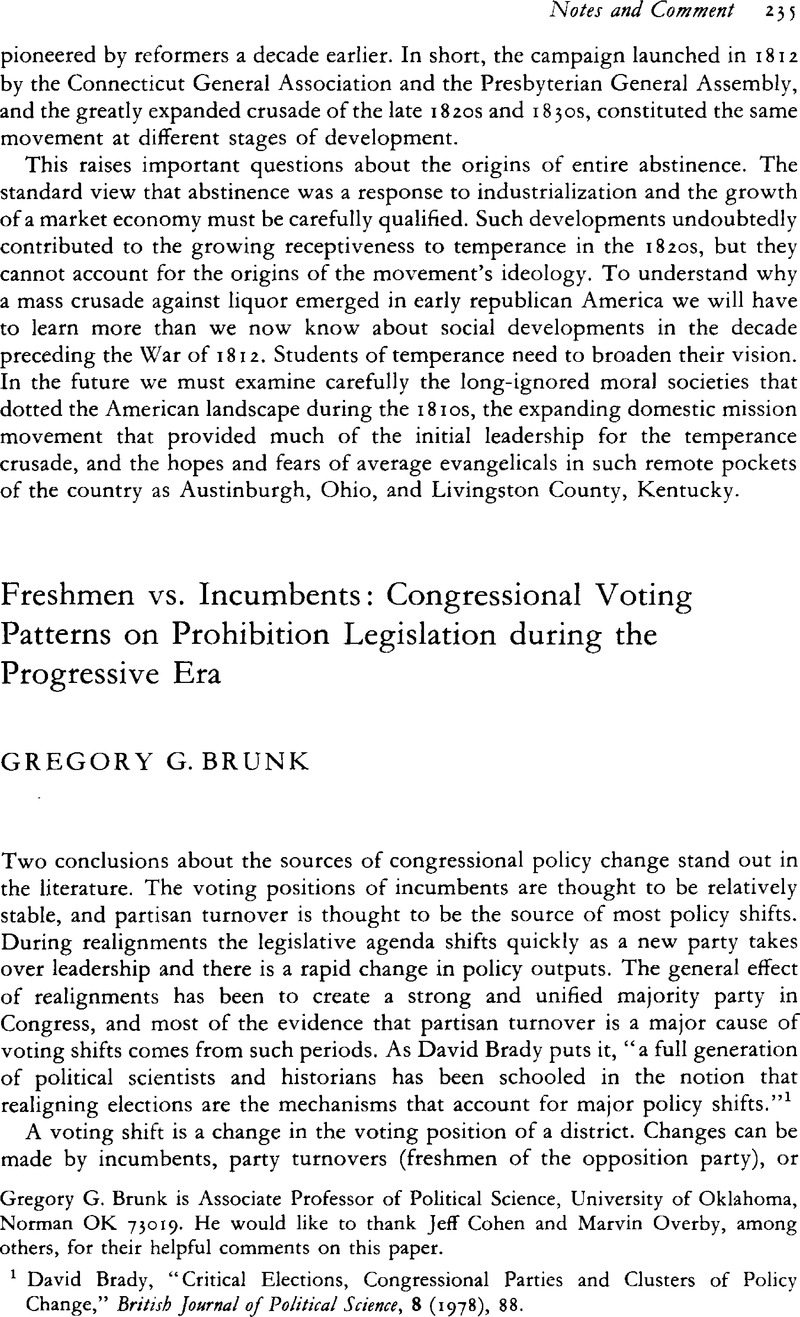No CrossRef data available.
Published online by Cambridge University Press: 16 January 2009

1 Brady, David, “Critical Elections, Congressional Parties and Clusters of Policy Change,” British Journal of Political Science, 8 (1978), 88.CrossRefGoogle Scholar
2 For two examples see Clausen, Aage R., How Congressmen Decide: A Policy Focus (New York: St. Martin's Press, 1973)Google Scholar and Brunk, Gregory G., “Turnover and Voting Stability in the Senate,” American Politics Quarterly, 10 (1982), 363–373.CrossRefGoogle Scholar
3 Mann, Thomas E., Unsafe at Any Margin: Interpreting Congressional Elections (Washington: American Enterprise Institute, 1978).Google Scholar
4 Examples include the study of the American anti-ballistic missile system by Bernstein, Robert A. and Anthony, William W., “The ABM Issue and the Senate, 1968–1970: The Importance of Ideology,” American Political Science Review, 68 (1974), 1198–1206CrossRefGoogle Scholar, and a study of Vietnam War rollcalls by Burnstein, Paul and Freudenberg, William, “Ending the Vietnam War: Components of Change in Senate Voting on Vietnam War Bills,” American journal of Sociology, 82 (1977), 991–1006.CrossRefGoogle Scholar
5 Odegard, Peter H., Pressure Politics (New York: Columbia University Press, 1928).Google Scholar
6 Farris, Charles D., “Prohibition as a Political Issue,” Journal of Politics, 23 (1961), 507–524CrossRefGoogle Scholar; Kerr, K. Austin, “Organizing for Reform: The Anti-Saloon League and Innovation in Politics,” American Quarterly, 32 (1980), 37–53CrossRefGoogle Scholar; Timberlake, James H., Prohibition and the Progressive Movement, 1900–1920 (Cambridge: Harvard University Press, 1966).Google Scholar
7 This ensures that each measure taps the same basic policy. The rollcall on which the most members voted is used if two rollcalls exist for a congress in order to maximize the number of cases available for analysis. None of these rollcalls was a party vote, and political party never explained more than two percent of the variance in voting.
8 In order to test this hypothesis, we first have to examine the different sorts of abstentions that were possible during this period. Besides voting “yea” or “nay,” congressmen could record that they were “present,” “paired yea,” or “paired nay.” “Present” clearly is a type of abstention as it does not state an opinion on a bill. A paired vote, on the other hand, was designed to tell constituents how one stood on the merits of a bill. A paired vote was cast when two congressmen held opposing positions on a bill, but were uncertain who would be present for a rollcall. As a means of making sure that unforeseen absences would not affect an outcome, a congressman favoring a bill would pair himself with one opposed, and if either member was absent, the other would announce his own position, but not vote. The “pair” would not be tallied, but the legislator's position would officially be recorded. Such pairs were reported in the publications of the Anti-Saloon League and we have not counted them as abstentions.
9 The reapportionments following each census present problems that complicate the determination of voting shifts. To control for these problems, the districts that experienced boundary changes are removed from the analysis until a new voting position was established.